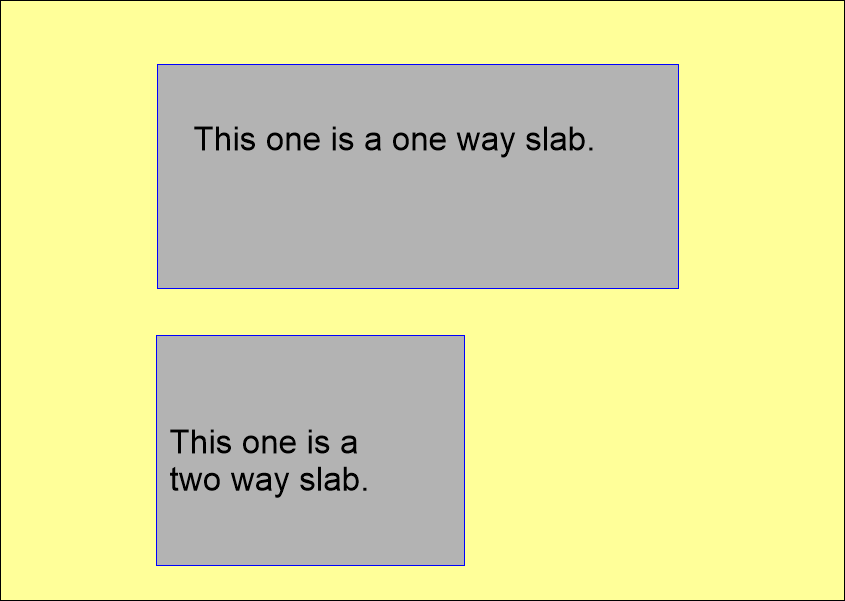The comparison of the One Way Slab v/s Two Way Slab is based on the ratio of longer span length to the shorter span length of the slab.
What is One Way Slab?
If the ratio of loner span to shorter span is more than two, say slab resembles a rectangle then it is called One Way Slab.
Properties of One Way Slab
- We need to provide main steel along shorter span and distribution steel along longer span in the one way slab.
- The two longer opposite sides support most of the load of slab.
- The deflected shape of a one way slab is cylindrical.
- The bending occurs in one way slab in only shorter span.
- In One Way Slab, calculations for bending moment are similar to RCC beam design.
What is Two Way Slab?
If the ratio of longer span of the slab to the shorter span is less than of equal to two then it is called Two Way Slab.
Properties of Two Way Slab
- This slab transfers its load on all the four supporting beams.
- We need to provide main steel in both the direction of slab.
- The deflected shape a two way slab is saucer like.
- The bending occurs in two way slab in both the direction.
There are two types of Two Way Slabs.
- Simply supported Two Way Slab – There is no restrain at corners for lifting up in this type of slab.
- Restrained Two Way Slab – In this type of slabs, corners are kept held down and thus torsion reinforcement is needed.
Read Also-
Download SP 34:1987 – Handbook of Concrete Reinforcement and Detailing
Prestressed Concrete And Its Advantages And Disadvantages
